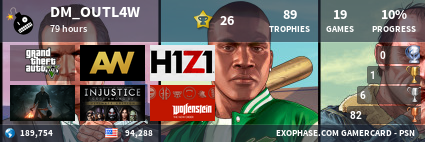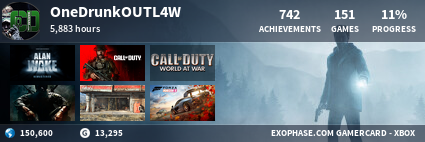Posted by Todd Zola on 07/25/2013 | 0 Comments
Tags: fantasy baseball, fantasy, MLB, baseball, trades, trading, strategy, christian yelich, oscar tavares, eric hosmer, brett lawrie, allen craig, lorenzo cain, felix hernandez, Jesus Montero, Yoenis Cespedes, Salvador Perez, Kris Medlen, cody allen

It has come to that point of the season where it is time to dump or get off of the pot.* It’s time to decide what it is that will get you into championship competition and go all out for it.* But what if you are gun-shy about pulling the trigger on that big trade that you know you need to make?* Todd Zola is here to tell his story on trading in fantasy baseball and to provide you with strategies to keep in mind when making those moves.*
My name is Todd and I’m a wuss.
Sure, put me in front of a podium or behind a microphone to talk fantasy baseball and my introverted shyness wanes as I morph from Clark Kent into the Man of SABR-Steel. But by and large, in most public settings I’m the creepy guy in the corner. I’m horrible at small talk and don’t like talking about myself.
In addition, I dread conflict and do whatever I can to minimize if not avoid confrontation. When I was in Graduate School, I paid for cable TV line into my room so as not to have to try to convince my roommate to watch some arbitrary college hoops game instead of a Seinfeld repeat he had no doubt seen 50 times already.
And finally, I am perilously wary of disappointment. Sort of explains why I am 50 years old, single and living in my sister’s basement. This isn’t exactly a personality trait conducive to dating.
Other than realizing I am the anti-Jeff Mans, what does this have to do with fantasy baseball?
I suck at trading – especially in keeper/dynasty formats. I mean, I REALLY suck at it.
However, I am pretty good at telling others how to trade, especially in keeper/dynasty formats. So without further ado, here’s Todd’s Top-Ten Trading Tips in Keeper and Dynasty Leagues.
1. If you decide to dump, then DUMP. Don’t pinch it off halfway, let loose.
If you try to win and also keep a foundation for the future, more often than not you end up doing a half-ass job at both. There’s nothing worse than selling off a keeper or two only to come up short. Either deal as many keepers as it takes to maximize your chance to win or sell off all your present season assets to accumulate possible keepers, even if speculative.
2. If possible, spread the wealth
If you are rebuilding, your primary interest is in your team. So if the best deal happens to be with the team presently in first, so be it. Your deal will not decide the league – or at least it shouldn’t. It is incumbent upon the other challenging teams to sacrifice their future and make a similar deal or two to keep up with the leader. That said, it is usually best to deal with several teams as opposed to sending all your assets to one squad, unless the return is far and away the best keeper in the league. The ancillary benefit is keeping multiple teams happy (which is important to wussies like me). It can be a challenge to balance the different pieces so you can get a viable keeper from two or three different teams but it can be done.
3. Don’t blow your wad all at once, try to leave a little behind
If you are going for it, do what you can to retain some keeper assets for the teams that decide to throw in the towel later in the season. Obviously, the earlier you acquire help for this season, the greater impact they can provide, but there are always teams that think they have a shot but decide at the trading deadline they are a long-shot. Keeper trading is all about supply and demand, and if you have the best keepers at that time, you should be able to fetch the best present season assets. The on-paper value may be different than the earlier deals (hopefully in your favor) but again, there is no way of measuring fairness. The present market dictates equity based upon the existent supply and demand dynamics.
4. Prospects are the best trading chips
If you’re in a league with a minor league draft, don’t hesitate to ship off prospects if you are trying to win. There is a romance with owning the new shiny toy that makes Christian Yelich more attractive to a rebuilder than an established Major Leaguer at an attractive salary. The recent success of Mike Trout has clouded expectations but ask those that had to have Eric Hosmer, Brett Lawrie and Desmond Jennings last season how that worked out for them. Trout is the exception. If you have Xander Bogaerts or Oscar Taveras on your farm team, deal them for a package that really helps win this season. The exception is if you play in a true dynasty where you keep your entire roster (or most of it) ad infinitum. Here you can be more selective since the help from the draft is minimal.
5. Don’t be afraid to keep salary
This could be the biggest mistake with respect to rebuilding. The cheap $1 journeyman is not the best keeper just because he’s a buck. Give me a $30 Allen Craig over a $1 Lorenzo Cain every time. It’s not all about what you are keeping, it’s about what you can buy with the budget you have at the auction. The top players will sell for inflated prices so if you have say $200 to spend, you may only be able to buy $160 worth or talent. Let’s say you froze $120 worth of talent with the $60 worth of keepers. You effectively put $280 worth of talent on your roster. Let’s say I freeze $240 worth or talent for $220. I have only $40 to spend. I’m not going to be able to buy any top players. By the time I can buy players, the inflation is wiped out and I can get guys at regular price if not at a bargain price. This means I put at least $280 worth of talent on my roster – same as you. The difference is you had to way overpay for your top line talent which means you have to toss them back whereas I can keep Craig again next season. In addition, if the league uses an in-season cap, you may have a tough time finding a taker for your $45 Felix Hernandez if things did not work out for you.
6. When rebuilding, avoid the prospect hype
We’ve already alluded to this with Hosmer, Lawrie and Jennings last season. The examples this season aren’t as extreme though Jesus Montero, Yoenis Cespedes, Salvador Perez and Kris Medlen were popular keeper targets with a limited track that have been a disappointment. Even if the perceived return on investment is minimal, it’s better to build a stable keeper foundation. You can always take your chances during the draft or auction. Keep your protected list as risk-free as possible.
7. Yes, you can protect pitching
If I had a buck for every time I heard or read someone advise to keep a lesser hitter over a better pitcher because you always keep hitting over pitching, I’d have a nicer car and less gray hair. By the end of the draft or auction, you’re going to need a full set of hitters and pitchers; there’s no reason not to freeze a pitcher if you get a good return on your investment. Sure, keep the hitter as a tie-breaker if all else is equal, but don’t eschew a superior pitching keeper just because of some unsubstantiated myth emanating from situations not apropos to constructing an optimal keeper list.
8. Closers have to be underpriced
The ONLY time I will freeze a reliever is if he is a seriously underpriced closer. I’ll trade for a $5 Cody Allen in the hopes he closes next season, but I won’t actually keep him unless it comes to fruition. There are some set up men that always return $8-$12, especially in single league, AL or NL only formats, but I won’t freeze one unless he’s going to close. You can always pick up a comparable reliever for the minimum bid. There is no reason to absorb the opportunity cost of freezing a set-up man.
9. After dumping, you should be counting the days until the spring auction or draft
*This is my personal litmus test. When I am offered some potential keepers, I decide if I will spend all winter yearning for the spring because they’re on team. I understand value and return on investment and that boring wins, but I’d rather have fewer quality keepers than a larger quantity of decent, but guys that don’t move the needle. You should be thinking about your keepers all winter and not say “oh yeah, I have him” when you look at your roster next February after the Super Bowl.
10. Trading is business, not personal
So long as you give everyone a fair shot, make your deals and sleep like a baby. Yeah, someone will be disappointed when you respectfully decline your offer, but they’re not going to go on a life-threatening drinking binge. They’re going to see what trade you did make and usually nod their head in approval. Your tires won’t be slashed; your Twitter account won’t be hacked. They have likely declined a trade as well so they aren’t taking it personally.
If I could only practice what I preach….
When Todd isn’t cowering in a strong-armed trade negotiation, he’s a Mastersball *Managing Partner in charge of the Platinum subscription content. Lord Zola, as he is affectionately known in the industry, also contributes to Baseball HQ, DFSEdge, KFFL, the ESPN Insider and is a frequent guest on SiriusXM Fantasy Sports radio. He’s a veteran of Tout Wars and LABR and has won multiple National Fantasy Baseball Championship titles.
Follow Todd on Twitter @ToddZola
[HR][/HR][h=3]Explore Related Content[/h]

More...
Tags: fantasy baseball, fantasy, MLB, baseball, trades, trading, strategy, christian yelich, oscar tavares, eric hosmer, brett lawrie, allen craig, lorenzo cain, felix hernandez, Jesus Montero, Yoenis Cespedes, Salvador Perez, Kris Medlen, cody allen

It has come to that point of the season where it is time to dump or get off of the pot.* It’s time to decide what it is that will get you into championship competition and go all out for it.* But what if you are gun-shy about pulling the trigger on that big trade that you know you need to make?* Todd Zola is here to tell his story on trading in fantasy baseball and to provide you with strategies to keep in mind when making those moves.*
My name is Todd and I’m a wuss.
Sure, put me in front of a podium or behind a microphone to talk fantasy baseball and my introverted shyness wanes as I morph from Clark Kent into the Man of SABR-Steel. But by and large, in most public settings I’m the creepy guy in the corner. I’m horrible at small talk and don’t like talking about myself.
In addition, I dread conflict and do whatever I can to minimize if not avoid confrontation. When I was in Graduate School, I paid for cable TV line into my room so as not to have to try to convince my roommate to watch some arbitrary college hoops game instead of a Seinfeld repeat he had no doubt seen 50 times already.
And finally, I am perilously wary of disappointment. Sort of explains why I am 50 years old, single and living in my sister’s basement. This isn’t exactly a personality trait conducive to dating.
Other than realizing I am the anti-Jeff Mans, what does this have to do with fantasy baseball?
I suck at trading – especially in keeper/dynasty formats. I mean, I REALLY suck at it.
However, I am pretty good at telling others how to trade, especially in keeper/dynasty formats. So without further ado, here’s Todd’s Top-Ten Trading Tips in Keeper and Dynasty Leagues.
1. If you decide to dump, then DUMP. Don’t pinch it off halfway, let loose.
If you try to win and also keep a foundation for the future, more often than not you end up doing a half-ass job at both. There’s nothing worse than selling off a keeper or two only to come up short. Either deal as many keepers as it takes to maximize your chance to win or sell off all your present season assets to accumulate possible keepers, even if speculative.
2. If possible, spread the wealth
If you are rebuilding, your primary interest is in your team. So if the best deal happens to be with the team presently in first, so be it. Your deal will not decide the league – or at least it shouldn’t. It is incumbent upon the other challenging teams to sacrifice their future and make a similar deal or two to keep up with the leader. That said, it is usually best to deal with several teams as opposed to sending all your assets to one squad, unless the return is far and away the best keeper in the league. The ancillary benefit is keeping multiple teams happy (which is important to wussies like me). It can be a challenge to balance the different pieces so you can get a viable keeper from two or three different teams but it can be done.
3. Don’t blow your wad all at once, try to leave a little behind
If you are going for it, do what you can to retain some keeper assets for the teams that decide to throw in the towel later in the season. Obviously, the earlier you acquire help for this season, the greater impact they can provide, but there are always teams that think they have a shot but decide at the trading deadline they are a long-shot. Keeper trading is all about supply and demand, and if you have the best keepers at that time, you should be able to fetch the best present season assets. The on-paper value may be different than the earlier deals (hopefully in your favor) but again, there is no way of measuring fairness. The present market dictates equity based upon the existent supply and demand dynamics.
4. Prospects are the best trading chips
If you’re in a league with a minor league draft, don’t hesitate to ship off prospects if you are trying to win. There is a romance with owning the new shiny toy that makes Christian Yelich more attractive to a rebuilder than an established Major Leaguer at an attractive salary. The recent success of Mike Trout has clouded expectations but ask those that had to have Eric Hosmer, Brett Lawrie and Desmond Jennings last season how that worked out for them. Trout is the exception. If you have Xander Bogaerts or Oscar Taveras on your farm team, deal them for a package that really helps win this season. The exception is if you play in a true dynasty where you keep your entire roster (or most of it) ad infinitum. Here you can be more selective since the help from the draft is minimal.
5. Don’t be afraid to keep salary
This could be the biggest mistake with respect to rebuilding. The cheap $1 journeyman is not the best keeper just because he’s a buck. Give me a $30 Allen Craig over a $1 Lorenzo Cain every time. It’s not all about what you are keeping, it’s about what you can buy with the budget you have at the auction. The top players will sell for inflated prices so if you have say $200 to spend, you may only be able to buy $160 worth or talent. Let’s say you froze $120 worth of talent with the $60 worth of keepers. You effectively put $280 worth of talent on your roster. Let’s say I freeze $240 worth or talent for $220. I have only $40 to spend. I’m not going to be able to buy any top players. By the time I can buy players, the inflation is wiped out and I can get guys at regular price if not at a bargain price. This means I put at least $280 worth of talent on my roster – same as you. The difference is you had to way overpay for your top line talent which means you have to toss them back whereas I can keep Craig again next season. In addition, if the league uses an in-season cap, you may have a tough time finding a taker for your $45 Felix Hernandez if things did not work out for you.
6. When rebuilding, avoid the prospect hype
We’ve already alluded to this with Hosmer, Lawrie and Jennings last season. The examples this season aren’t as extreme though Jesus Montero, Yoenis Cespedes, Salvador Perez and Kris Medlen were popular keeper targets with a limited track that have been a disappointment. Even if the perceived return on investment is minimal, it’s better to build a stable keeper foundation. You can always take your chances during the draft or auction. Keep your protected list as risk-free as possible.
7. Yes, you can protect pitching
If I had a buck for every time I heard or read someone advise to keep a lesser hitter over a better pitcher because you always keep hitting over pitching, I’d have a nicer car and less gray hair. By the end of the draft or auction, you’re going to need a full set of hitters and pitchers; there’s no reason not to freeze a pitcher if you get a good return on your investment. Sure, keep the hitter as a tie-breaker if all else is equal, but don’t eschew a superior pitching keeper just because of some unsubstantiated myth emanating from situations not apropos to constructing an optimal keeper list.
8. Closers have to be underpriced
The ONLY time I will freeze a reliever is if he is a seriously underpriced closer. I’ll trade for a $5 Cody Allen in the hopes he closes next season, but I won’t actually keep him unless it comes to fruition. There are some set up men that always return $8-$12, especially in single league, AL or NL only formats, but I won’t freeze one unless he’s going to close. You can always pick up a comparable reliever for the minimum bid. There is no reason to absorb the opportunity cost of freezing a set-up man.
9. After dumping, you should be counting the days until the spring auction or draft
*This is my personal litmus test. When I am offered some potential keepers, I decide if I will spend all winter yearning for the spring because they’re on team. I understand value and return on investment and that boring wins, but I’d rather have fewer quality keepers than a larger quantity of decent, but guys that don’t move the needle. You should be thinking about your keepers all winter and not say “oh yeah, I have him” when you look at your roster next February after the Super Bowl.
10. Trading is business, not personal
So long as you give everyone a fair shot, make your deals and sleep like a baby. Yeah, someone will be disappointed when you respectfully decline your offer, but they’re not going to go on a life-threatening drinking binge. They’re going to see what trade you did make and usually nod their head in approval. Your tires won’t be slashed; your Twitter account won’t be hacked. They have likely declined a trade as well so they aren’t taking it personally.
If I could only practice what I preach….
When Todd isn’t cowering in a strong-armed trade negotiation, he’s a Mastersball *Managing Partner in charge of the Platinum subscription content. Lord Zola, as he is affectionately known in the industry, also contributes to Baseball HQ, DFSEdge, KFFL, the ESPN Insider and is a frequent guest on SiriusXM Fantasy Sports radio. He’s a veteran of Tout Wars and LABR and has won multiple National Fantasy Baseball Championship titles.
Follow Todd on Twitter @ToddZola
[HR][/HR][h=3]Explore Related Content[/h]
- 2013 Fantasy Baseball Waiver Pickups: Week Eighteen
- The Farm Report: Minor League Baseball Coverage From A Fantasy Perspecitve (Prospect Bonanza)
- Rounding the Bases: Hudson Hurt, Hosmer Hot and Other Wednesday Highlights
- Rounding the Bases: Puig, Marte, Gomez & Cespedes
- Rounding the Bases: BOOM Goes the Dynamite
- Rounding the Bases: Baffled By Bartolo and Other Sunday Highlights
- Rounding the Bases: Saturday Highlights and Prepping For the Trade Deadline
- 2 Start Pitchers Week 17 2013
- Rounding the Bases: The Second Half Kicks Off With a Bang
- 2013 Fantasy Baseball Waiver Pickups: Week Seventeen
- Pitch and Ditch Week 16 2013
- Rounding The Bases: Master Notes From Todd Zola
- Rounding the Bases: Second Half Targets
- Rounding the Bases: Five First Half’s
- 2 Start Pitchers Week 16 2013
- Rounding the Bases: Lincecum Says 'Remember Me' With No-No
- Rounding the Bases: They're Dropping Like Flies
- 2013 Fantasy Baseball Waiver Pickups: All-Star Break
- Master Notes From Todd Zola
- Pitch & Ditch Week 15 2013
More...












